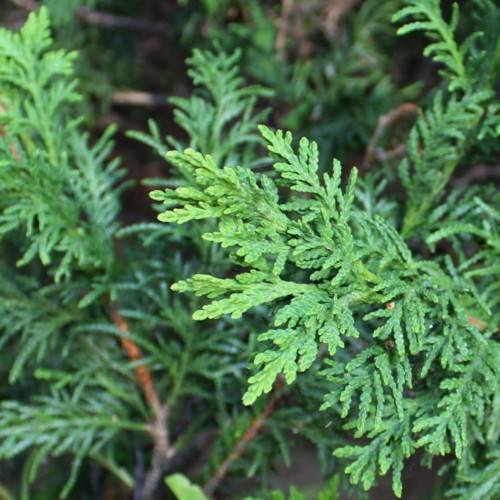
American arborvitae
Thuja occidentalis 'Bodmeri'
Cycle:
Perennial
Watering:
Frequent
Hardiness Zone:
2 - 7
Flowers:
Flowers In Spring
Sun:
Full sun, Part sun/part shade
Soil:
Sandy Loamy Clay Rocky
Cones:
Yes
Leaf:
Yes
Growth Rate:
Moderate
Maintenance:
Low
Drought Tolerant:
Yes
Care Level:
Moderate
watering
American arborvitae should be watered deeply once per week during the growing season (April through October). After the first year, it will be more tolerant of longer periods without watering. When watering, try to moisten the soil to a depth of about 12 inches. During a drought or extreme heat, additional watering may be needed. Make sure to water slowly so the soil has time to absorb the moisture. If possible, water in the morning to give the plant plenty of time to dry off during the day.
sunlight
American arborvitae (Thuja occidentalis 'Bodmeri') is a medium-sized evergreen shrub that is native to North America. This species does best in full sun, so it should be planted in an area of the garden that receives 6 to 8 hours of direct sunlight each day. If your garden is shaded, it may not receive enough sunlight to thrive. In general, these plants do best when they receive the maximum amount of sunlight throughout the day, especially during the spring and summer growing seasons. In winter months, arborvitaes can tolerate some shade and even brief periods of full shade.
pruning
American arborvitae (Thuja occidentalis 'Bodmeri') should be pruned twice a year, in the late spring and late summer, to maintain its desired shape and create a healthy and attractive plant. In late spring, lightly prune the plant by removing dead or damaged foliage and stems. This will help encourage new growth and promote healthy foliage. In late summer, do a more comprehensive pruning of the plant if more drastic shaping is desired. Leave the top growth alone and focus the pruning on side shoots, removing any that are crossing or are overcrowded. Be sure to use clean and sharp pruning tools and remove no more than 1 third of the foliage at any time.
